By Laurie Goldstein, April 2012
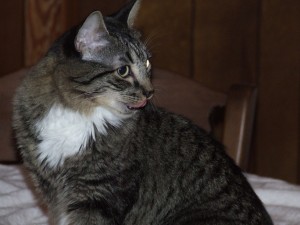 In searching for the healthiest food to feed our cats, many people pass over the commercial raw option simply because they believe they can’t afford it. And industry articles and blogs promote the notion that feeding commercially prepared raw food is the most expensive option. Finances are tight for many, and even those who adamantly desire the very best for their cats may be discouraged away from raw by these comments. This analysis completely debunks that myth. Raw is not, in fact, any more expensive to feed than other commercial options, and in many cases, it costs less!
In searching for the healthiest food to feed our cats, many people pass over the commercial raw option simply because they believe they can’t afford it. And industry articles and blogs promote the notion that feeding commercially prepared raw food is the most expensive option. Finances are tight for many, and even those who adamantly desire the very best for their cats may be discouraged away from raw by these comments. This analysis completely debunks that myth. Raw is not, in fact, any more expensive to feed than other commercial options, and in many cases, it costs less!
For this analysis, I compared 48 brands of kibble (including ZiwiPeak’s air-dried raw not intended for rehydration), 40 canned foods, and 15 commercial frozen raw foods. The kibble category included 10 “supermarket” distribution brands, 19 grain-free brands, 18 pet/specialty distribution brands, and the one raw kibble. The canned category included 8 supermarket distribution brands, 17 grain-free brands, and 15 pet/specialty store distribution brands.
Some of the results? If you’re feeding a 10 pound cat the manufacturer recommended daily allowance (RDA), it’s costing you approximately:
In kibble:
$0.22 per day (please refer to notes with tables) if you’re feeding Cat Chow Complete kibble,
$0.37 per day if feeding Purina ProPlan kibble,
$0.43 per day for Orijen (grain-free) kibble or Blue Buffalo Wilderness (grain-free) kibble,
$0.44 for EVO (grain-free) kibble, and
$0.54 for Wellness Core (grain-free) kibble.
In canned:
$1.08 per day to feed your cat Friskies Meaty Bits canned,
$1.38 for Natural balance Green Pea & Duck (grain-free) canned,
$1.96 for EVO 95% (grain-free) canned,
$2.45 for Wellness Core (grain-free) canned,
$3.12 for Taste of the Wild Rocky Mountain (grain-free) canned,
$4.47 for Purina One SmartBlend canned, and
a whopping $5.48 per day for Royal Canin Instinctive canned.
In raw:
$0.68 per day to provide Bravo Balance frozen raw chicken if available at a local retailer ($0.97 shipped),
$1.01 for Darwin’s Naturals frozen raw chicken (shipped),
$1.07 per day for Nature’s Variety frozen raw chicken (if available at a local retailer) or $1.67 per day with shipping,
$1.12 for Primal frozen raw chicken & salmon ($2.01 shipped),
$1.13 for Stella & Chewy’s frozen raw chicken ($1.80 shipped), and
$1.31 for Vital Essentials frozen raw chicken ($1.54 shipped).
That’s right; you can feed your cat a variety of frozen commercial raw delivered to your door for less than it costs to feed Friskies wet food! 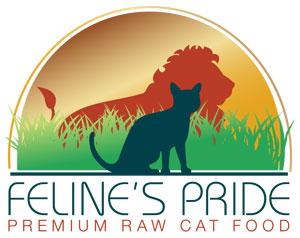
According to Jane Brody, writing for The New York Times in 2010 (The Truth About Cat and Dog Food), “Recognizing the high value most owners place on their companion animals, and distressed by recent recalls of contaminated pet foods, two scientists decided to examine the pet food industry and the evidence for the value of its products and the claims made for them.” The results of the work of Marion Nestle, the Paulette Goddard Professor of nutrition, food studies and public health at New York University, and Malden C. Nesheim, Emeritus Professor of nutrition at Cornell University, were reviewed.
The New York Times article reported that Dr. Nestle (“pronounced NES-sel”) found “the so-called premium pet foods cost three to four times more than supermarket brands. Within the premium brands, there is also a wide price range yet when the ingredients lists are compared, they are strikingly similar [as]…All pet foods are made from the byproducts of human food production. No matter what the package says, your dog is not getting whole chicken breasts, but what remains after the breasts have been removed for human food.” (emphasis added). The NYT article lists the largest manufacturers in the pet food industry: Nestlé, Purina, Mars and Procter & Gamble. But Nestlé owns Purina (having purchased Ralston Purina in 2001), and Del Monte, which holds the #3 market share spot in the pet food industry, is not included in the list. Each of the pet food industry giants is first and foremost a giant in packaged human foods. The pet food industry giants are found in just about every isle of the supermarket – not just the pet supplies isle: pet food puts what would otherwise be profit-draining waste to profit-enhancing use.
Drs. Nestle and Nesheim examined premium versus nonpremium brands and found that there often isn’t much difference in quality. Given most pet foods are manufactured from the human food chain waste products, this shouldn’t be overly surprising. They found that nonpremium (generic or supermarket distribution) pet foods contain more grains and by-products, but that “all contained basically the same ingredients.” Of course there are differences in protein sources, and marketing of “grain-free” foods has altered the pet food industry landscape forever. An apparent step in the right direction for a more species-appropriate diet, and certainly a life-saver for many pets that have developed allergies or other health problems related to consuming grains, sadly “grain-free” is not synonymous with low carbohydrates (see tables). It’s no news to vets and animal nutritionists that cats, as carnivores, have essentially no nutritional requirement for carbohydrates. Yet those grains have been replaced with peas, potatoes, and other “non-grain” carbohydrates. Carrots, peas, and potatoes not fit for human consumption are still cheaper than our waste meat products.
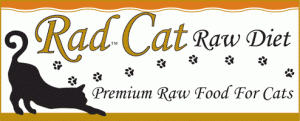
The good news for people that want a convenient and affordable way to feed raw is that there is a sea change occurring in the pet food industry, led by a transformation in our relationship with our pets and combined with growing consumer awareness. In 2006, Matthew Park, V.P. of Del Monte’s Pet Products division said, “the humanization of pets is the single biggest trend driving our business.” A report recently published by the Rockville, MD-based consumer research firm Packaged Facts, the U.S. Pet Market Outlook 2011-2012 indicates that currently over two-thirds (67%) of U.S. pet owners “strongly agree” that they consider their pets to be a part of the family. No wonder we do our best to buy the highest quality food we can afford!
Trade information indicates a growing number of pet owners are taking steps to provide better nutrition for their cats and dogs. According to the Packaged Facts’ report, the “alternative” segment of pet food manufacturers is experiencing impressive growth despite the current economic environment. While the total U.S. pet food industry grew 0.5% in 2010, the fresh/frozen/refrigerated pet food category was one of the fastest growing segments. An established market, the fresh/frozen/refrigerated for dogs experienced 10% growth to $39.1 million; a relatively new commercial market, fresh/frozen/refrigerated for cats, grew a whopping 648.5% (off a nascent base) to approximately $1 million in sales.
The trend in raw feeding our pets is garnering a lot of attention in the pet food industry. PetfoodIndustry.com and other trade magazines and blogs have featured the growing demand for this healthier, species-appropriate food for our furry family members. Yet almost every article written about the subject implies the cost of feeding commercial raw food is essentially prohibitive. In an exchange with a vet writing for The Daily Vet blog, when the subject of feeding raw was raised (by me) in comments, his response was “I am a practitioner who participates in the real world where clients have economic realities that results in their feeding dry kibble so I offer advice to help them achieve goals with their choices without chastising them for their situation.”
This piqued my curiosity. The cost of homemade raw is quite easy to calculate. Raw feeders use the guideline that cats require 2%-4% of their body weight in food daily; the only other required input – over which we have enormous control when making homemade food – is the amount we spend per pound of food purchased. Assuming a 10 pound adult cat requires 2% of his body weight in food daily, the cost to feed one cat is:
At $1.00 per pound for meat/bones/organs the cost is $0.20 per day;
At $2.00 per pound the cost is $0.40 per day;
At $3.00 per pound the cost is $0.60 per day;
At $4.00 per pound the cost is $0.80 per day;
At $5.00 per pound the cost is $1.00 per day.
But how does this compare to commercial food options? The results were quite surprising.
The costs for daily feeding of premium/super-premium kibble ranges from $0.24 per day to $1.62 per day; for canned, from $0.97 to $5.48 per day; for frozen raw (available locally and shipped), from $0.61 to $3.90 per day. Yes, you read that right – it costs less to feed the most expensive commercial raw – shipped! – than the most expensive canned foods.
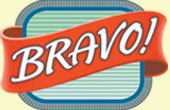
Because all kibble and canned foods can be purchased without shipping, those costs were not included. However, as most commercial raw foods if not available in local stores require shipping (and in some cases handling charges for the dry ice and special packaging), I compared commercial raw foods both with and without estimated shipping & handling charges (as calculated by the online distributor or manufacturer). Comparisons were made assuming one 10 pound cat and used manufacturer recommended daily allowances (please see notes to tables, below).
To feed kibble, the approximate cost ranges from $0.16 per cat per day (PRO PAC’s “Premium” Adult cat food) to $1.03 for Wysong’s Grain-free and starch-free Epigen90 (and $1.62 per day to feed ZiwiPeak’s air-dried raw).
To feed canned, the cost ranges from $0.87 per cat per day (PRO PAC’s “Superpremium” Adult canned cat food) to $5.48 for Royal Canin’s Adult Instinctive canned food.
To feed commercial raw excluding shipping, the cost ranges from $0.61 per cat per day (Nature’s Menu frozen raw chicken) to $2.16 per day (Wild Kitty frozen raw chicken & clam).
To feed commercial raw including estimated shipping & handling charges, the cost ranges from $0.86 per cat per day (CountryPet Naturals frozen raw) to $2.39 (Wild Kitty).
It costs more than twice as much (239% as much!) to feed Royal Canin Adult Instinctive canned than it does the most expensive frozen raw food delivered to your door. And the cheapest commercial non-kibble option is a frozen raw food, not a canned food! It is a complete myth that commercial raw costs more to feed your cat than canned food.
As this analysis illustrates so clearly, when evaluating the cost of FEEDING pet food, it is not sufficient to calculate the cost per pound. First, when feeding wet vs. dry, we pay for the moisture in canned food. It is almost by definition more expensive to feed than kibble because of this alone. Second, recommended feeding amounts vary quite widely due to the differing nutritional content of the foods. Thus the recommended quantity of food to be fed daily is an essential factor in calculating daily feeding cost.
For kibble, recommended daily amounts (RDA) for one 10 pound cat range from 1.6 ounces daily (Hill’s Science Diet Ideal Balance Adult Feline) to approximately 4.2 ounces daily (California Natural Chicken Grain-Free). Because of the moisture content in canned food, the RDA of wet food ranges from 4.1 ounces (PRO PAC Superpremium Adult Cat Food) to 13.8 ounces (9 Lives Daily Essentials). So that 9 Lives Daily Essentials may only cost $0.75 per can online ($2.18 per pound), but it costs $1.87 per day to feed your 10 pound cat: the PRO PAC “Superpremium” Adult cat food costs more per can at $1.17 ($3.39 per pound), but it costs just $0.87 per day to feed that same 10 pound kitty.
The most expensive food per pound, Rad Cat frozen raw food, at $19.51 per pound (including estimated shipping and handling) actually costs LESS to feed than PurinaOne SmartBlend canned or Royal Canin Adult Instinctive, at $5.95 and $8.78 per pound, respectively. And if your local retailer carries or can order Nature’s Menu frozen raw, Aunt Jeni’s frozen raw, Bravo Balance frozen raw, or Darwin’s Pet Naturals frozen raw (each reflects chicken variety), ALL of these cost less to feed your cat daily than the cheapest canned food option (PRO PAC). As already mentioned, because CountryPet Naturals lamb & chicken frozen raw food ships for free at PetFoodDirect.com, at $0.86 per day to feed your 10 pound cat, it is the least expensive non-kibble food you can feed your pet.
I feel it is also important to note that there are commercial raw options that cost less than feeding kibble! There are 3 commercial raw foods (excluding shipping) that cost less to feed (Nature’s Menu Chicken, $0.61 per day; Aunt Jeni’s chicken, $0.67 per day; Bravo Balance chicken, $0.68 per day) than 2 of the most expensive kibbles (California Natural Grain-Free Dry, $0.75 per day; and Newman’s Own Organics Adult Dry, $0.75 per day).
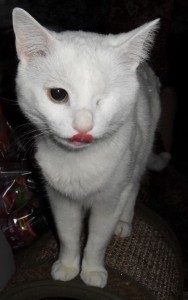
As to the grain-free options? Grain-free does not always mean low carbohydrates. This is not news. Cats are carnivores and have no dietary requirement for carbohydrates. A recent study, “Estimation of the dietary nutrient profile of free-roaming feral cats: possible implications for nutrition of domestic cats,” (Plantinga et al. 2011) published last October, is an analysis of the nutritional content of feral cat diets – 27 studies, 6,666 data points. The study confirms what we already know: cats eat raw meat. The study found that the hunting feral cats consumed approximately 2% carbs (N-free extract, “NFE”), and all NFE consumption was incidental ingestion, meaning the stomach contents of consumed prey animals. So how do our commercial foods fare in providing species-appropriate nutrition? (All carbohydrate content presented on a dry-matter basis).
The 48 kibble products analyzed ranged from 7% carbohydrates to 43% carbs. Of the 19 grain-free kibble foods compared in this analysis, just 4 have less than 10% carbohydrates, and one of those is an all meat air-dried raw. The lowest carb content of a grain-free kibble is 7%; the highest carb content of a grain-free kibble is a shocking 41%.
Wet foods fared better. The 40 wet foods analyzed ranged from 1.8% carbohydrates to 29.9% carbs. Of 17 grain-free brands of wet food analyzed, 6 have less than 10% carbs. Interestingly, 6 supermarket/pet store/specialty distribution brands that are not grain-free (or not marketed as grain-free) also have less than 10% carbs.
The commercial raw products aren’t marketed as grain-free foods. But not surprisingly, none had in excess of 10% carbohydrates: most have just 0.5% carbohydrates.
The bottom line? There are raw feeding options (both commercial and homemade) that are cost competitive to feeding kibble and canned. If you live in the U.S. and can afford to feed an inexpensive canned food or an expensive kibble, you have commercial raw feeding options.
Back-up Documentation
Summary Combined Cost Comparison Table
Summary Combined Cost Comparison Table Notes
Laurie Goldstein is a CFA Charterholder. Laurie and her husband have rescued cats, focusing on ferals, since 2002. In addition to her work as an equity analyst, she applies her research skill to all things cat, focusing on advocacy for feral cat management via trap-neuter-return (TNR) and research on cat predation. Learn more about these subjects on her website: StrayPetAdvocacy.org.
If you enjoyed this article or found it informative, please “Like” it, “Tweet” it, or share it using any of the buttons below. And don’t forget to check out our FB page, join the discussions in our awesome FB group and follow us on Twitter!
Created 04/11/12; Updated 08/11/14



Pingback: Feeding Your Siberian | Hypoallergenic Cats